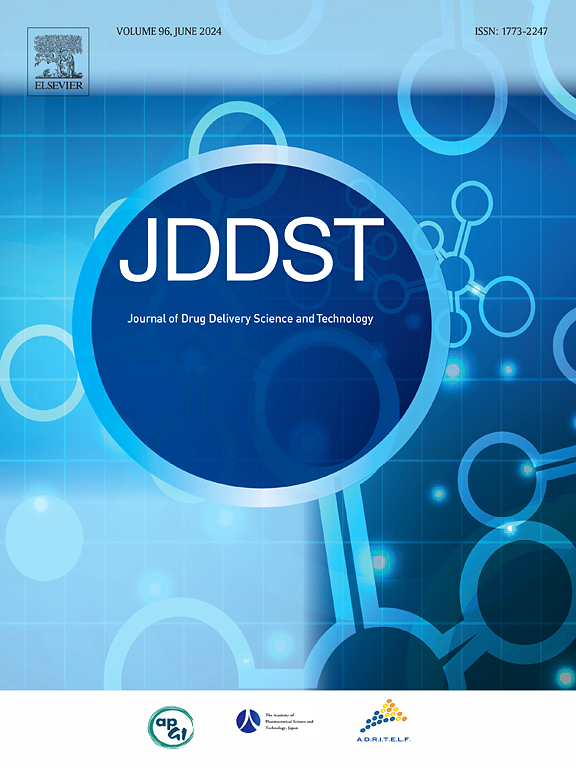Chrysin loaded novasomes for enhanced wound healing management: In-vitro/ in-vivo evaluation
IF 4.5
3区 医学
Q1 PHARMACOLOGY & PHARMACY
Journal of Drug Delivery Science and Technology
Pub Date : 2025-04-01
DOI:10.1016/j.jddst.2025.106886
引用次数: 0
Abstract
The purpose of the study was to develop and evaluate novasomes (NOVs) loaded with Chrysin (CR) for the effective management of wound healing. Thin-film hydration technique was adopted for the preparation of Chrysin Novasomes (CR-NOVs). Vesicles were prepared employing cholesterol along with oleic acid and 3 types of non-ionic surfactants (Span 60, Span 40 and Tween 80) at different concentrations. CR-NOVs exhibited high CR EE%, ranging from 94.31 ± 1.35 to 99.76 ± 0.12 %. The vesicle size was between 214.5 ± 1.4 to 493.4 ± 9.8 nm. The prepared NOVs showed negative zeta potential values ranged from −16.4 ± 4.96 to −33.2 ± 3.45, confirming their good stability. Transmission electron microscopy (TEM) demonstrated that the optimized vesicles had a spherical shape. CR release from NOVs was biphasic, and the release behavior followed Higuchi's model through diffusion mechanism. Topical application of CR-NOVs for 10 days reduced wound size and promoted wound healing activity via elevating collagen and α-smooth muscle actin (α-SMA) synthesis as well as increasing tissue inhibitor of metalloproteinases-1 (TIMP-1). Additionally, CR-NOVs treatments alleviated extracellular matrix (ECM) degradation by targeting matrix metalloproteinases (MMP2). These findings suggest that the created CR-NOVs may be a unique treatment that affects re-epithelization by increasing collagen and α-SMA, hence reducing the time of the wound-healing process.

求助全文
约1分钟内获得全文
求助全文
来源期刊
CiteScore
8.00
自引率
8.00%
发文量
879
审稿时长
94 days
期刊介绍:
The Journal of Drug Delivery Science and Technology is an international journal devoted to drug delivery and pharmaceutical technology. The journal covers all innovative aspects of all pharmaceutical dosage forms and the most advanced research on controlled release, bioavailability and drug absorption, nanomedicines, gene delivery, tissue engineering, etc. Hot topics, related to manufacturing processes and quality control, are also welcomed.

 求助内容:
求助内容: 应助结果提醒方式:
应助结果提醒方式:


